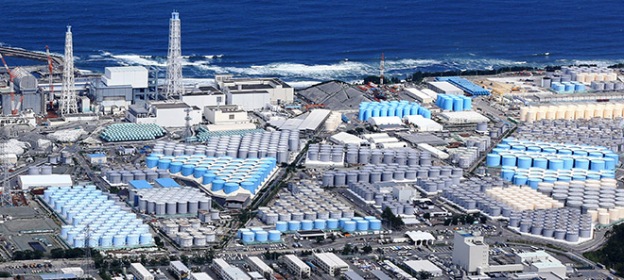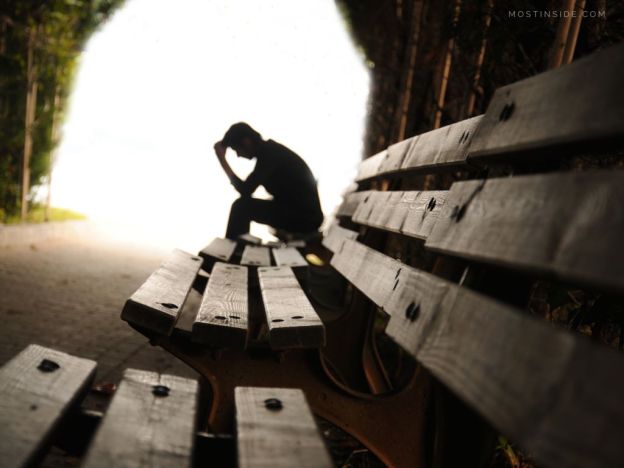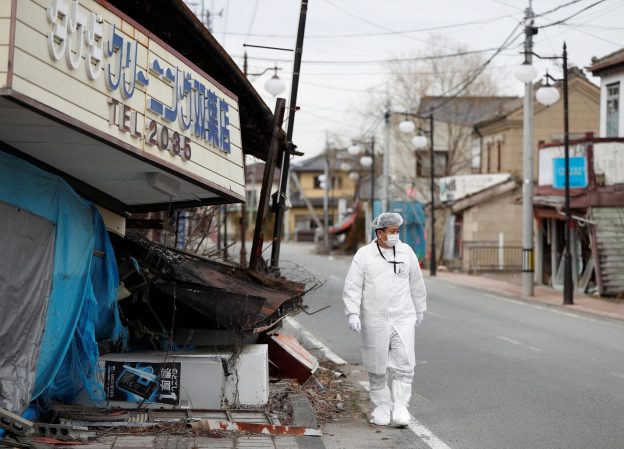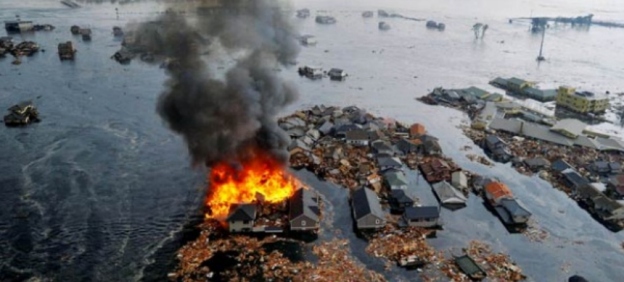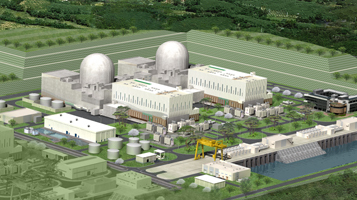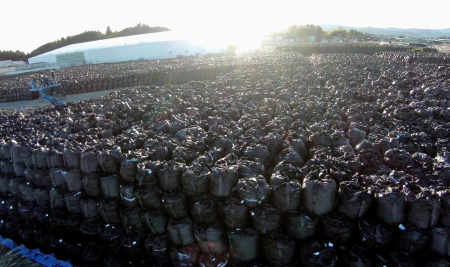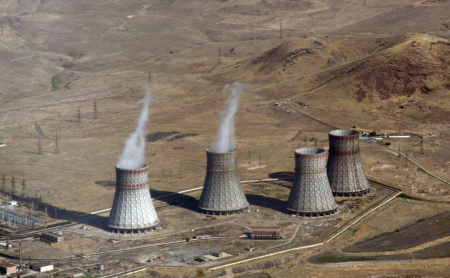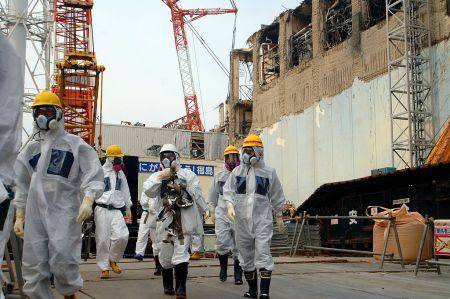Three major atomic accidents [Three Mile Island US 1979, Chernobyl USSR 1986, Fukushima Japan 2011] in 35 years are forcing the world’s nuclear industry to stop imagining it can prevent more catastrophes and to focus instead on how to contain them. As countries such as China and India embrace atomic power even after the Fukushima reactor meltdowns in 2011 caused mass evacuations because of radiation fallout, scientists warn the next nuclear accident is waiting to happen and could be in a country with little experience to deal with it.
“The cold truth is that, no matter what you do on the technological improvements side, accidents will occur — somewhere, someplace,” said Joonhong Ahn, a professor at the Department of Nuclear Engineering of University of California, Berkeley. The consequences of radiation release, contamination and evacuation of people is “clear and obvious,” Ahn said. That means governments and citizens should be prepared, not just nuclear utilities, he said.
While atomic power has fallen from favor in some western European countries since the Fukushima accident — Germany, for example, is shutting all of its nuclear plants — it’s gaining more traction in Asia as an alternative to coal. China has 28 reactors under construction, while Russia, India, and South Korea are building 21 more, according to the World Nuclear Association. Of the 176 reactors planned, 86 are in nations that had no nuclear plants 20 years ago, WNA data show…
The problem is that the causes of the three events followed no pattern, and the inability to immediately contain them escalated the episodes into global disasters with huge economic, environmental and political consequences. Even if no deaths have yet been officially linked to Fukushima radiation, for example, cleanup costs have soared to an estimated $196 billion and could take more than four decades to complete.
If nuclear is to remain a part of the world’s energy supply, the industry must come up with solutions to make sure contamination — and all other consequences — do not spread beyond station grounds, Gregory Jaczko, ex-chairman of the U.S. Nuclear Regulatory Commission, said in an interview in Tokyo….
Since the introduction of nuclear stations in the 1950s, the industry has focused safety efforts on design and planning. Research and innovation has looked at back-up systems, passive technology that would react even if no human operator did, and strengthened materials used in construction of atomic stations….
The official toll from the reactor explosion at Chernobyl was put at 31 deaths. Radiation clean-up work, however, involved about 600,000 people, while 200,000 locals had to be relocated. The accident contaminated 150,000 kilometers of land and according to the last Soviet leader Mikhail Gorbachev it was a factor in bringing about the collapse of the Soviet Union in 1991.
In Japan, the meltdown of three Fukushima reactors helped unseat premier Naoto Kan and forced the evacuation of about 160,000 people, destroying local fishing, farming and tourism industries along the way. It also brought tens of thousands of anti-nuclear protesters out onto the streets in the country’s biggest demonstrations since the 1960s. Tokyo Electric Power Co., the plant operator and once the world’s biggest non-state power producer, would have been bankrupted by the Fukushima accident but for billions of dollars in government aid…
Building a plant that would contain an accident within the facility boils down to cold cash, he said. The review calls for new reactor designs to make a major release of radioactive fallout outside the station site “practically impossible,” the IAEA said. The standard would be “crucial for public acceptance and for the sustainability of nuclear energy.” Specialists on the review met for the first time in March and no conclusions are yet available, IAEA spokesman Greg Webb said by e-mail.
The problem with an engineering solution, an ever better reactor design or grander safety systems, is that based on the premise that all technology is fallible those defense systems can also fail, Berkley’s Ahn said. “This is an endless cycle,” Ahn said. “Whatever is your technology, however it is developed, we always have residual risk.” When the next nuclear accident occurs the world needs to have better knowledge of how to limit the spread of radiation and do the clean-up, including removing radiation from the soil, water and having an efficient evacuation drill for the population in danger zones, Ahn said. We also need more understanding of the impact of low-dose radiation on organisms, he said. “This is about recovery from an accident, not preventing an accident,” Ahn said. “It’s completely different. And I think this concept is very necessary for the future of nuclear utilization.”
Excerpts from Yuriy Humber, World Needs to Get Ready for the Next Nuclear Plant Accident, Bloomberg, Apr. 4, 2014
